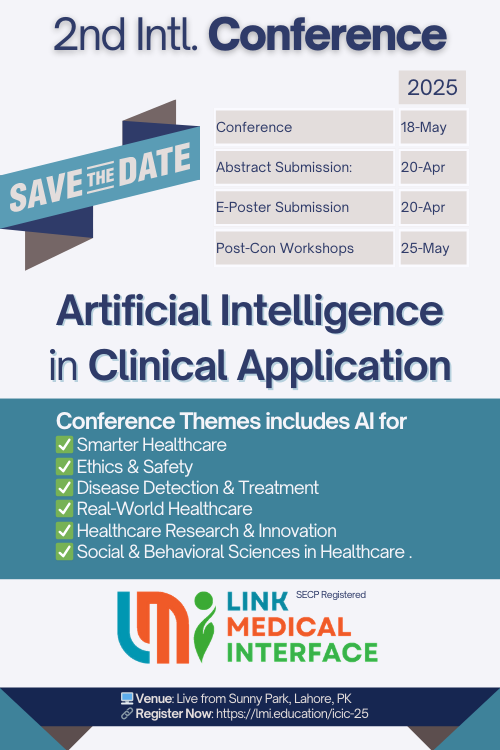A Review on the Effects of Daily Use Chemicals on Human Health
DOI:
https://doi.org/10.61919/jhrr.v4i3.1803Keywords:
Daily-use chemicals; Human health risks; Endocrine disruptors; Chemical regulation; Eco-friendly alternativesAbstract
Everyday chemicals found in personal care products, cleaning products, plastics, and household items are increasingly recognized as contributors to a wide range of adverse health effects. Those chemicals include phthalates, parabens, bisphenol A (BPA), triclosan, synthetic fragrances, and flame retardants, many of which have been linked to endocrine disruption, neurodevelopmental disorders, reproductive toxicity, metabolic disorders, and some cancers. This review combines the results of contemporary toxicological and epidemiological research to provide a comprehensive overview of human exposure pathways, mechanisms of toxic action, and associated health risks. Special attention is paid to sensitive groups such as infants, children, pregnant women, and people with pre-existing disease, who are likely to be more affected by chronic exposure to low doses of these contaminants. The article also discusses international control policies such as the U.S. Toxic Substances Control Act (TSCA), the Food and Drug Administration’s Consumer Products Regulations, and the European Union’s REACH regulations. While some progress has been made in banning or restricting certain toxic chemicals, enforcement is still spotty, and thousands of chemicals are still used without proper safety assessments. Furthermore, shortcomings in the science base of regulations such as the failure to assess aggregate exposures and chemical combinations create formidable obstacles to protecting public health. To address these challenges, the review discusses alternative options, from natural and environmentally friendly consumer products to the importance of public education in reducing exposure. Proposed policy recommendations include adopting the precautionary principle, accelerating international harmonization, increasing green chemistry research funding, and expanding biomonitoring programs. Finally, this review emphasizes the urgent need for integrated, science-based strategies in chemical safety that integrate regulatory reform, public education, and industrial innovation to reduce the health risks of everyday chemicals and ensure long-term environmental and human health sustainability.
Downloads
References
Bouchard MF, Chevrier J, Harley KG, Kogut K, Vedar M, Calderon N, et al. Prenatal exposure to organophosphate pesticides and IQ in 7-year-old children. Environ Health Perspect. 2011;119(8):1189–95. https://doi.org/10.1289/ehp.1003185
Diamanti-Kandarakis E, Bourguignon JP, Giudice LC, Hauser R, Prins GS, Soto AM, et al. Endocrine-disrupting chemicals: An Endocrine Society scientific statement. Endocr Rev. 2009;30(4):293–342. https://doi.org/10.1210/er.2009-0002
Dixon HG, Borland R, Segan CJ, Stafford H. Public education campaigns and their impact on reducing exposure to harmful chemicals: A systematic review. Int J Environ Res Public Health. 2021;18(9):4570. https://doi.org/10.3390/ijerph18094570
Dodson RE, Nishioka M, Standley LJ, Perovich LJ, Brody JG, Rudel RA. Endocrine disruptors and asthma-associated chemicals in consumer products. Environ Health Perspect. 2012;120(7):935–43. https://doi.org/10.1289/ehp.1104052
Gore AC, Chappell VA, Fenton SE, Flaws JA, Nadal A, Prins GS, et al. EDC-2: The Endocrine Society's second scientific statement on endocrine-disrupting chemicals. Endocr Rev. 2015;36(6):E1–150. https://doi.org/10.1210/er.2015-1010
Harley KG, Kogut K, Madrigal DS, Cardenas M, Vera IA, Meza-Alfaro G, et al. Reducing phthalate, paraben, and phenol exposure from personal care products in adolescent girls: Findings from the HERMOSA intervention study. Environ Health Perspect. 2016;124(10):1600–7. https://doi.org/10.1289/EHP178
Janjua NR, Frederiksen H, Skakkebaek NE, Wulf HC, Andersson AM. Urinary excretion of phthalates and parabens after repeated whole-body topical application in humans. Int J Androl. 2008;31(2):118–30. https://doi.org/10.1111/j.1365-2605.2007.00841.x
Landrigan PJ, Fuller R. Environmental pollution: An under-recognized threat to children's health, especially in low- and middle-income countries. Environ Health Perspect. 2015;123(3):A68–70. https://doi.org/10.1289/ehp.1409515
Landrigan PJ, Raps H, Cropper M, Stegeman JJ. The need for a global chemical safety initiative. Lancet Planet Health. 2020;4(11):e521–3. https://doi.org/10.1016/S2542-5196(20)30227-6
Quinn MM, Henneberger PK, Braun B, Delclos GL, Fagan K, Huang V, et al. Cleaning and disinfecting environmental surfaces in health care: Toward an integrated framework for infection and occupational illness prevention. Am J Infect Control. 2015;43(5):424–34. https://doi.org/10.1016/j.ajic.2015.01.029
Rochester JR. Bisphenol A and human health: A review of the literature. Reprod Toxicol. 2013;42:132–55. https://doi.org/10.1016/j.reprotox.2013.08.008
Schecter A, Malik N, Haffner D, Smith S, Harris TR, Paepke O, et al. Bisphenol A (BPA) in U.S. food. Environ Sci Technol. 2010;44(24):9425–30. https://doi.org/10.1021/es102785d
Svanes Ø, Skorge TD, Johannessen A, Bertelsen RJ, Bråbäck L, Dharmage SC, et al. Cleaning at home and at work in relation to lung function decline and airway obstruction. Am J Respir Crit Care Med. 2018;197(9):1157–63. https://doi.org/10.1164/rccm.201706-1311OC
Swan SH, Main KM, Liu F, Stewart SL, Kruse RL, Calafat AM, et al. Decrease in anogenital distance among male infants with prenatal phthalate exposure. Environ Health Perspect. 2005;113(8):1056–61. https://doi.org/10.1289/ehp.8100
Tickner JA, Jacobs MM, Edwards S. Evaluating chemical safety policies in the United States and the European Union: Different approaches, similar outcomes? Environ Sci Technol. 2019;53(2):703–11. https://doi.org/10.1021/acs.est.8b05207
Trasande L, Lampa E, Lind L, Bornehag CG. Chemical policy reforms for prevention of disease and healthcare savings: A call to action. Lancet Diabetes Endocrinol. 2020;8(8):580–2. https://doi.org/10.1016/S2213-8587(20)30118-3
Trasande L, Zoeller RT, Hass U, Kortenkamp A, Grandjean P, Myers JP, et al. Burden of disease and costs of exposure to endocrine disrupting chemicals in the European Union: An updated analysis. Andrology. 2018;6(5):728–36. https://doi.org/10.1111/andr.12538
Zota AR, Phillips CA, Mitro SD. Recent fast food consumption and bisphenol A and phthalates exposures among the U.S. population in NHANES, 2003–2010. Environ Health Perspect. 2016;124(10):1521–8. https://doi.org/10.1289/ehp.1510803
Downloads
Published
How to Cite
Issue
Section
License
Copyright (c) 2024 Muhammad Haseeb Hassan, Fatima Nadeem, Rumasa Asif, Areeb Ahmed, Abdul Muneb Ahmad, Ghulam Junaid, Tayyaba Yousif, Muhammad Tahir Zaman

This work is licensed under a Creative Commons Attribution 4.0 International License.
Public Licensing Terms
This work is licensed under the Creative Commons Attribution 4.0 International License (CC BY 4.0). Under this license:
- You are free to share (copy and redistribute the material in any medium or format) and adapt (remix, transform, and build upon the material) for any purpose, including commercial use.
- Attribution must be given to the original author(s) and source in a manner that is reasonable and does not imply endorsement.
- No additional restrictions may be applied that conflict with the terms of this license.
For more details, visit: https://creativecommons.org/licenses/by/4.0/.






